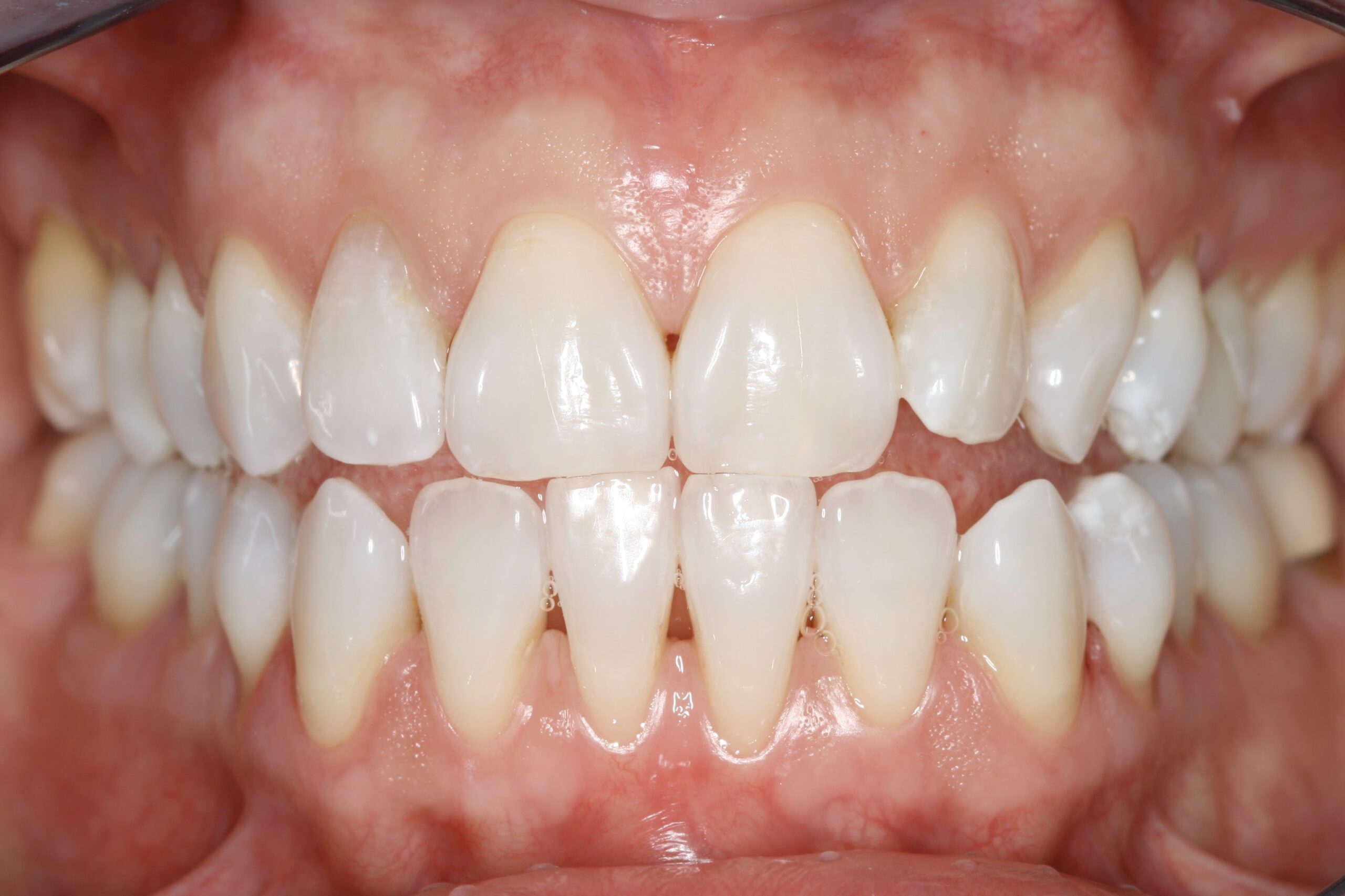Tooth Whitening
Tooth colour can be very effectively lightened with peroxide used on either the outside or the inside of the tooth.
What is Tooth Whitening?
Like hair and skin, teeth vary in colour. Some are more yellow or darker than others, even when they are quite healthy. Tooth colour can be very effectively lightened with peroxide used on either the outside or the inside of the tooth. Tooth whitening is completely safe when supervised by a fully trained dentist, therapist or hygienist. Professionals’ use specially formulated whitening gels.
If you have any further questions please ask a member of the team and we will be more than happy to answer any of your queries.
Before & After
Frequently asked questions
Why have my teeth discoloured?
Teeth naturally become more yellow as we age, but other factors can also cause yellowing and staining. Tea, coffee, red wine and of course smoking all contribute to a build-up of stains, and some medications may also cause discolouration. But with professional tooth whitening it is possible for most people to achieve a whiter, brighter smile very simply.
What are the benefits?
Whitening improves the appearance of your teeth without removing any of the natural tooth surface. Whitening is a better option than a crown or veneer if you want to lighten the colour of healthy teeth, as the placing of crowns and veneers involves changing the shape of the tooth.
Does it hurt?
Both home whitening and power whitening may cause a small increase in sensitivity to hot and cold. This is transient and settles down quickly once the treatment finishes. In very rare cases, sensitivity can continue in one or more teeth and may require further treatment.
How long does it last?
After whitening, teeth usually maintain their brighter shade very well. Of course, the effects do vary from individual to individual and will be influenced by diet, smoking, tea, coffee and red wine consumption. These external stains from diet can usually be removed by the dentist or hygienist. We recommend that a whitening maintenance regimen be followed to ensure that your teeth remain brighter for longer.
What will my dentist do?
There are three ways of whitening the teeth. One takes place at home and the others in the dental surgery.
Professionally supervised home whitening
Performed under the direction of your dentist, home whitening is also very effective. Your dentist will need to use a putty-like material to make moulds of your mouth so a dental technician can make special trays that fit your teeth exactly. At your next appointment, your dentist will check that the tray fits and show you how to put the whitening gel in the trays. At home, you apply whitening gel to the trays and fit them over your teeth, leaving them for several hours, usually overnight. This method takes an average of 3 to 4 weeks
Power or ‘In-house’ whitening
This technique uses a combination of home and ‘in chair’ whitening. Your dentist will use a different whitening gel than is used for home whitening. Dentists use this method to whiten all the teeth at the same time. The gel will touch the teeth for less time than with home whitening. The dentist might protect your gums. They will paint the gel onto the teeth and either shine a special light at them or just leave the gel on the teeth for some time. The gel is then washed off with water. Your dentist will make a note of your tooth colour using a shade guide before they treat you. Your teeth may be sensitive to hot and cold food and drink for a few days after whitening.
Internal whitening
Where the ‘nerve’ of a tooth has ‘died’ (through damage or disease) and the tooth’s root has been filled, gel is put inside the tooth, under a temporary dressing. The whitening gel remains in the tooth for about a short period of time before being cleaned out so that a white filling can be placed.
Can anyone have whitening?
There are very few cases where teeth cannot be whitened. However, crowns, veneers and other restorations in your teeth will not change colour so your dentist will discuss this with you before you start treatment. We recommend that if you are pregnant or breastfeeding that you do not undertake this particular treatment.








